Whitefish belly up on my right. Few minutes later, another one off the nose of the boat. It’s early fall on the South Fork of the Snake River in Idaho. The cool release following summer heat is a relief, but it didn’t come soon enough in this cottonwood-lined corridor. Dead whitefish are the fatal sign and the sight is alarming. Whitefish are a river’s canary in a coalmine. If something is wrong with whitefish, something is wrong with the river.
“You never want a degraded system,” says Dan Garren, Idaho Department of Fish and Game Upper Snake regional fisheries manager. “If you can wave a magic wand and have a pristine system, you certainly prefer that.”
Garren didn’t get his preference. He got disease. The magnitude of it turned out to be an estimated 2,000 dead white fish in 2012, with a few more floaters popping up every year since. The cause? Proliferative Kidney Disease (PKD). The same disease prompting Montana’s current 183-mile closure on the Yellowstone River plus its tributaries.
“We were anxious, but we didn’t know if it was something to be upset about,” Garren says. “We knew it was killing fish, but we didn’t know what the magnitude would be.”
Pathologist Doug Burton discovered Idaho’s PKD in 2012. Garren sent him a few precious samples that are surprisingly hard to come by despite anglers seeing several dead fish rise from the depths.
“To do the testing, you have to find a fish that’s sick but not dead,” Garren says. “Once they die, they degrade and testing is difficult. You have a very small window for testing.”
PKD comes from freshwater sponges called bryozoans. The contamination theory has to do with how fish breathe. Fish inhale particles when they’re gilling. If those particles are of the sickly sponge variety, the disease the sponge carries grabs hold in a hurry.
“If you get a sticker in your hand and leave it there, it turns red and swells up. That’s your response,” says Burton, Idaho Department of Fish and Game fishery pathologist. “Same thing happens to fish, but it’s in its kidneys, spleen and muscles.”
Burton had seen PKD in some rainbows and browns, but whitefish were a first.
“I had never documented it in any wild population in Idaho before and I think it was the first time ever in whitefish,” he says. “It took a while to confirm what we were dealing with.”
Once confirmed, the Idaho waterway stayed open. In Montana, it closed. Why? Two major reasons:
- Idaho had an estimated fish kill of 2,000. Montana’s estimates are running into tens of thousands.
- Montana Fish, Wildlife and Parks is authorized to close waterways to all activity with a 120-day emergency closure. Idaho Department of Fish and Game can only close a fishing season. It can’t close a whole waterway or any other activity in that waterway. That’s a municipal decision at the county level or possibly the federal level if something like a Bureau of Land Management boat ramp is involved.
Closing water in Montana won’t make PKD disappear. The hope is it will stop the spread of it to other systems. Idaho’s blue ribbon prize, the Henry’s Fork of the Snake River, is just over the hill from Yellowstone. The watercraft check station is open on the Idaho-Montana border. Stopping for inspection upon entering Idaho is mandatory by law.
The Montana closure also gives heat-stressed fish some pressure relief. They won’t spend all day dogging flies and dodging feet. Similar to you taking a sick day when you need to stay in bed with the sniffles.
Regardless of valid reasons, closing water is a costly decision and the outdoor industry is taking a hit. A decision of this magnitude isn’t taken lightly.
“A threat to the health of Montana’s fish populations is a threat to Montana’s entire outdoor economy and the tens of thousands of jobs it sustains,” says Gov. Steve Bullock. “Our state cannot afford this infectious disease to spread to other streams and rivers and it’s my responsibility to do everything we can to stop this threat in its tracks and protect Montana jobs and livelihoods.”

Much like the nefarious and better-known disease of the whirling kind, once PKD is in a system, it’s in. It doesn’t go away and it rears its deadly head in the heat of the season when fish are most stressed.
“In many ways it would be better if I could say, ‘Okay, this is what it is and here’s the solution,’” Burton says. “Unfortunately there isn’t an easy solution. If there is a silver lining it’s this, the fish that survive this infection develop a strong immunity.”
One other silver lining, track record. Four fishing seasons have passed since the PKD discovery of 2012 on the South Fork of the Snake. That section of river is surveyed closely every fall. PKD is still in the system, so are whitefish. So are more cutthroat trout and brown trout. Rainbow trout are down, but that’s by design as part of the ongoing effort to keep native Yellowstone cutthroat trout in the system. Total trout per mile is up from 4,803 in 2011 to 5,069 in 2015. Take that PKD.




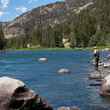






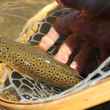




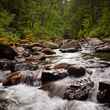
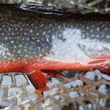



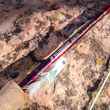




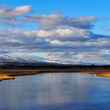




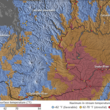

Comments
Sinjin Eberle replied on Permalink
Good article, Kris - nicely done!
ken replied on Permalink
Has anybody considered the pithing of the lake trout in L. Yellowstone and the subsequent release of debilitated fish to die in the lake as a reservoir for infection. Anybody
Scott Johnson replied on Permalink
Dying and dead fish do not produce pathogens that are detrimental to living fish. Lake trout carcasses are returned to the lake, and their decomposition does not produce microorganisms that would sicken living fish.
Fred Rickson replied on Permalink
I read that the causative organism in the Yellowstone River fish kill is "endemic" to the larger area. This would point to some environmental change causing the outbreak rather than a unique introduction of the organism. Maybe part of some natural cycle?
Pages